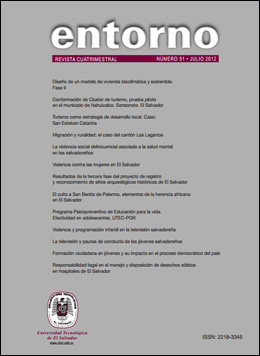Psychopreventive program of education for life : effectiveness in adolescents. UTEC-PGR
DOI:
https://doi.org/10.5377/entorno.v0i51.6944Keywords:
Education for life, Prevention program, Responsible parenthood, Collective behavior, Adolescent behavior, Social action, Social programs, Public assistanceAbstract
With the aim of analyzing the preventive psychosocial intervention implemented by the Attorney General of the Republic (PGR), through the implementation of a programmer psych educational in schools as response to institutional plans, seeking to protect children and adolescents, arises specifically, identify the elements that strengthen and hamper the achievement of the results of the project analyze the effectiveness of it through the designed objectives and propose a Psicopreventivo education for life programmer. Selected a design expostfacto, in a sample of 305 students in ninth grade students who received the program for three years, themes distributed annually. Nonparametric inference and descriptive analyses were performed. Validated the effectiveness of the program through the impact it has on the beneficiary population assisted. Students who received the program presented perceptual changes on the issues addressed and identified the risks of life which are likely to be exposed in his teens. One of the implications in the study is that found differences might be intercepted by social factors of the environment, family and school, however, we can infer that there are psychosocial variables that mean risks and that changes have been generated in the group that has been receiving the intervention of the institution.
Downloads
607
Downloads
Published
How to Cite
Issue
Section
License
© Entorno
It is required that the authors transfer the right of re-production of their articles to the Entorno Journal

